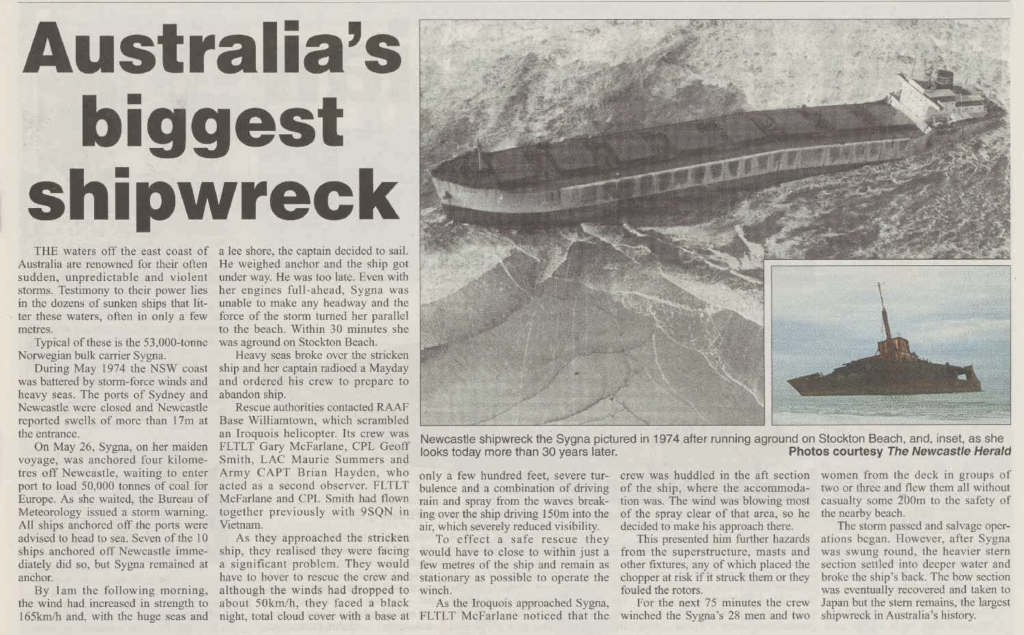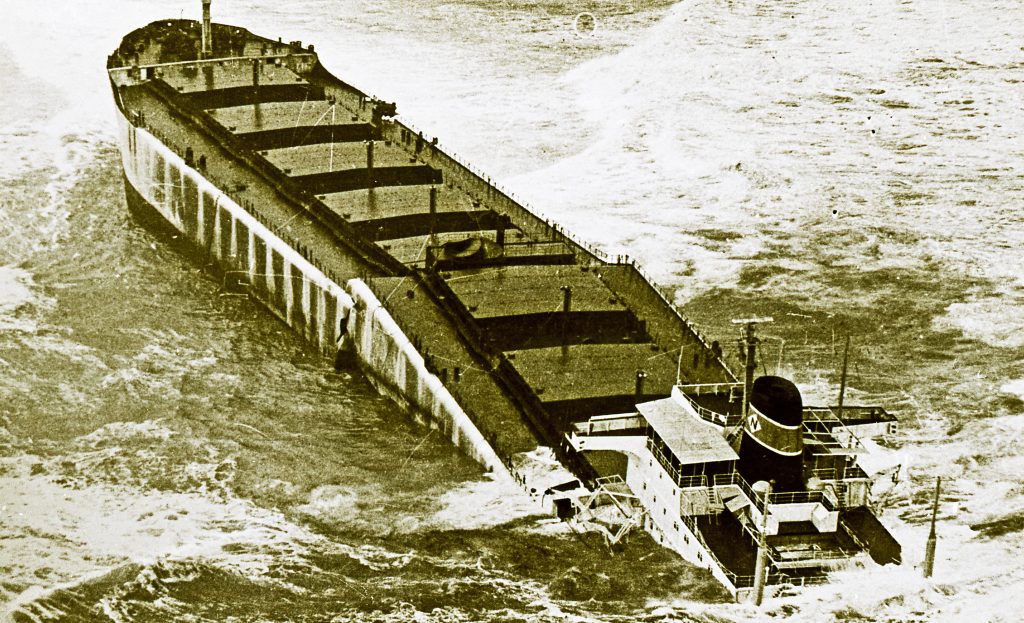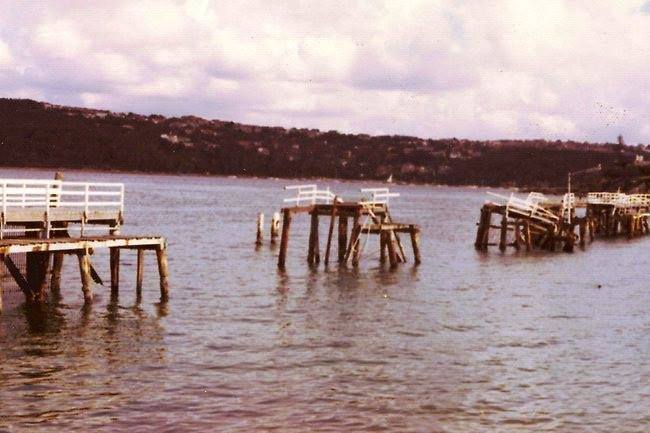On Sunday, May 26, 1974, the 53,000-tonne Norwegian bulk carrier Sygna was anchored off the Port of Newcastle, Australia, waiting to load 50,000 tonnes of coal destined for Europe.
An intense low-pressure system had developed south-west of Sydney and lasted for several days. A severe storm warning had been issued, and ships were directed to move out to sea.
Seven of the 10 ships waiting off the port did so, but the Sygna wasn’t one of them. The MV Sygna’s captain, Ingolf Lunde, is understood to have missed the warning, and when he saw a later report, he believed that his ship could ride out the storm.
He was wrong.

Winds of up to 70 miles per hour and the largest swell conditions ever seen at the port’s entrance were recorded, with a wave height of over 17 metres.
Just after midnight, the storm significantly increased, and several ships in Newcastle harbour broke loose from their moorings, causing chaos in the shipping channel of the Hunter River.
Around 2am, the communication cables connecting Nobbys signal station with Sydney were damaged, cutting the critical link and leaving the port with only a domestic radio link.
Winds gusted at 165km/h, and the conditions caused the Sygna to drag anchor and drift eleven kilometres sideways in half an hour before grounding 130 metres off Stockton Beach. Captain Lunde had requested assistance from tugs in the port, but the bar was too dangerous for the tugs to leave.

At around 7am, police reported that the Sygna appeared to have ‘broken its back’— oil was leaking from the ship, and a crease and crack had developed along the vessel’s side.
The stern settled in deep water as soon as the storm and the sea subsided. The ship was initially considered too large to be salvaged, and the wreck was declared a total loss and left in place. After an initial attempt to rescue the crew via lifeboat, an Iroquois helicopter from Williamstown RAAF base lifted the crew of thirty to safety with no injuries or loss of life.

On 4 September a salvage team of 23 led by Japanese man Kintoku Yamada refloated the ship after repairing several holes in the hull and pumping out thousands of tonnes of water. The stern section was refloated first, followed by the bow, which had been resting deep in the sand.
On September 6, the bow remained afloat, but unfortunately for the salvagers, the ship broke in half. The stern again went aground about 80 metres out from the beach. It gradually settled in the sand as salvage crews stripped it of all valuables.
The bow section remained in Salamander Bay, Port Stephens, for almost two years before being towed to Taiwan in January 1976.
During late September and early October, several failed attempts were made to salvage the stern, which was driven back ashore by bad weather and continued to leak oil, affecting approximately five miles of beach.

It’s believed about 700 tonnes of oil were lost and dispersed by heavy seas. Bulldozers carried out beach cleaning, but following further salvage attempts of the stern in November, very heavy oil spillage occurred, spreading along the beach up to 10 miles north of the site.
The response was limited to further beach clean-up by a bulldozer, with oil buried in the sand above the high water mark.

In January 2010, NSW National Parks and Wildlife said the Sygna would likely rust to the waterline within 10 years.
During storms in June 2016, the remaining superstructure collapsed into the sea.

The same storm smashed other parts of the coast, including parts of Sydney, particularly Manly.
As a child, this author lived opposite the Manly boardwalk and pool and saw the destruction of the 335m boardwalk that had been built in 1931.
The stunning boardwalk extended across the harbour from the ferry wharf to the then-pavilion and aquarium and featured diving towers, pontoons, and slides.




What are your memories of the 1974 Sygna storm? Share them below and post your photos to the Lost Newcastle Facebook group here.






0 Comments